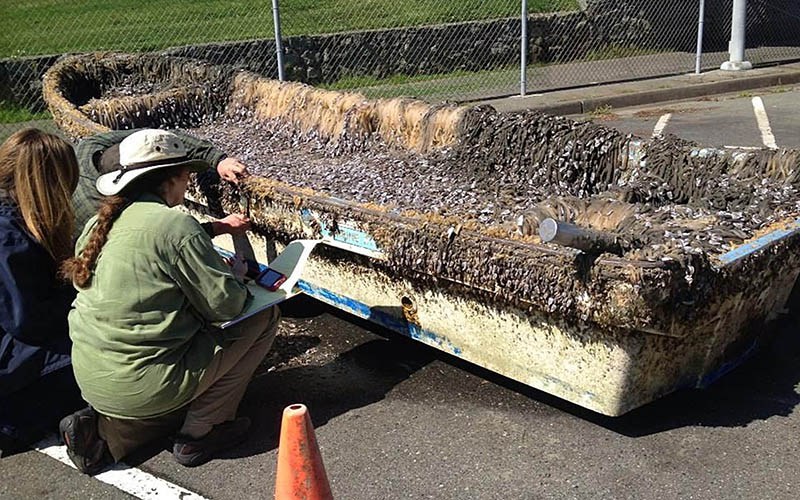Path of Japan Tsunami Debris Predicted by Computers

Computer simulations have been accurate in predicting where debris from the 2011 tsunami in Japan would wash ashore, scientists say.
On March 11, 2011, a 9.0-magnitude earthquake rocked Japan and triggered a devastating tsunami, killing more than 18,000 people.
Half a year later, a Russian ship, the STS Pallada, spotted the first evidence of tsunami driftage in the Pacific Oce. The crew was on a homeward voyage from Honolulu to Vladivostok, and scientists had warned that they would encounter debris soon after passing the Midway Islands. Sure enough, in that exact spot, they picked up plastic bottles, buoys and even a small fishing boat. [Photos: Tsunami Debris & Trash on Hawaii's Beaches]
Three years on, barnacle-crusted refrigerator doors, plastic toy soldiers, boat fragments and floating docks continue to turn up on the faraway shores of Hawaii, California, Oregon, Washington and Alaska. These tsunami wreckage sightings are still in agreement with the model used by Nikolai Maximenko and Jan Hafner, researchers from the University of Hawaii at Manoa's International Pacific Research Center (IPRC).
The model, dubbed the Ocean Drift Model, is based on wind patterns and drifting buoys that are tracked by satellite. It was recently used to confirm the incredible voyage of a Mexican fisherman who made headlines last month when he washed ashore in the Marshall Islands after more than a year at sea, IPRC officials say.
After the Japanese tsunami, Maximenko and Hafner say they refined the initial model to simulate the paths of different types of debris, taking into account how wind would affect the course of different materials with varying fractions of their surfaces exposed above the water. (An animation of the debris dispersal can be seen here.)
More buoyant objects with more area exposed to the wind get pushed along faster. The model accurately predicted that items like oyster buoys and small fishing boats would be the first bits of debris to turn up in Hawaii in August and September 2012, a year and a half after the tsunami, Maximenko and Hafner say.
Get the world’s most fascinating discoveries delivered straight to your inbox.
The model also projected that items with lower buoyancy, or lower "windage," such as wooden poles and beams with less of their body exposed, wouldn't wash ashore until two and a half years after the disaster.
The researchers have said their model can't be used to track the path of radioactive particles released by the crippled Fukushima nuclear plant in the wake of the 2011 disaster. An effort by a scientist at the Woods Hole Oceanographic Institution has been launched to track radionuclides in the ocean.
"The principal difference is that debris floats on the sea surface and cannot sink, while radionuclides move with water parcels three-dimensionally," according to a statement on the IPRC's website. "As a result, concentration of debris on the ocean surface can increase with time in areas of convergence, whereas there is no hydrodynamical mechanism that could increase concentration of radionuclides, it can only decay with time."
The research was scheduled to be presented Monday (Feb. 24) at the Ocean Sciences Meeting in Honolulu.
Follow Megan Gannon on Twitter and Google+. Follow us @livescience, Facebook & Google+. Original article on Live Science.




